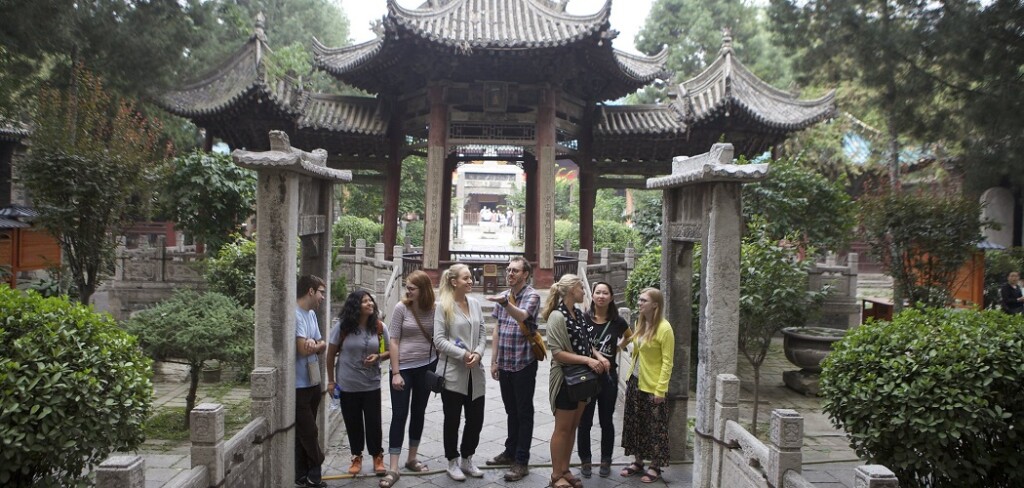Page 186 • (1,905 results in 0.048 seconds)
-

the Morken Center for Learning and Technology, and subsequently during the M. J. Murdock Charitable Trust-sponsored Twenty-Third Regional Conference on Undergraduate Research of the Murdock College Science Research Program in November in Vancouver, Wash. The Mount Rainier research was funded through a PLU Division of Natural Sciences and the Wiancko Charitable Foundation grant through the environmental studies program at PLU. Barbara Conner Barbara Clements is the former Content Development
-
. “If you look at a lot of reporting in the Western media you get that sense,” he said. (Video by Rustin Dwyer, PLU) But Manfredi said educational exchanges, such as the one fostered by PLU, are key in bridging that divide — and fighting misconceptions. Kimberly Nolasco ’17, an environmental studies and global studies major, said seeing Chengdu and breaking down barriers allows students to hear China’s narrative straight from the source. “China can tell you who they really are,” she said. As China
-

, Pacific Lutheran University Loading... It’s FREE to apply to PLU When you're ready, we're here. Apply now and fulfill your potential! Get Started Related Programs: Chinese & Chinese Studies Communication Environmental Studies French & Francophone Studies Hispanic & Latino Studies History Philosophy Psychology Publishing & Printing Arts Religion @PLUEnglish @pluenglish Studying English at PLU means opening yourself up to opportunities for growth and change. Through your English courses, you will find
-
request to a technician via a paging system. All after hour emergencies should be reported to Campus Safety at extension 7441 (253-535-7441). What are chargeable services?Chargeable services are submitted by work order request. These services are not routinely supported by Facilities. They include: Gasoline for PLU vehicles Non-PLU sponsored event support Office moves or alterations Painting beyond the regular maintenance schedule* Removal of hazardous materials; please contact environmental services
-
interest for committees (March) Nominations (Mar-April) Campus Vote (April-May) Service (August-May – 3 year terms) Eight faculty-created standing committees currently exist: Academic Performance and Integrity Core Curriculum Educational Policies Faculty Affairs Global Education Governance Instructional Resources Rank and Tenure Committee Service OpportunitiesThe following are non-elected committee opportunities: Interdisciplinary Program Committees Chinese Studies Environmental Studies Global Studies
-
Ethics and the Church Fathers” 2010-11: Erin McKenna, Danielle Palmer, & Jonathan Stout “Philosophy and Farming” [Also funded by Wiancko Environmental Studies Endowment] 2011-12: Paul Manfredi & Leif Nordquist, “Chai-Na” (“Tear it Down”): Documenting the End of the Blackbridge Art Village” PLU News article: Tear it Down Tony Finitsis & Jessica Reiter, “A Critical Apparatus for a Modern Greek Edition of the Book of Job” Marit Trelstad & Kristen Lee, “The Role of Lutheran Theology and Lutheran Church
-

commitments to social justice, will invite participants to consider the relationship between environmental and public health as she addresses sources in Lutheran higher education that foster a spirituality of justice. Paul Westermeyer, a distinguished Lutheran musician and historian from St. Olaf College and Luther Seminary, brings his scholarship on the music of justice that forms ethical commitments. In that light, and in support of PLU’s commitment to promote justice and peace, the fourth annual
-

double minored in environmental studies and English writing. Her day-to-day job includes leading tours and and answering many questions, among other duties. “It’s pretty awesome to see a 7-year-old kid sharing a cool fact about Yosemite that he remembers from when you told him,” Plog said. She said her job is a way of life — hiking, walking, enjoying the great outdoors, interacting with diverse visitors, living where she works and focusing on education and the environment. “You never really stop
-

Speaking Teacher, Jiaxiang Foreign Language Middle School, China Graduates from the last last 5 years: Their graduate programs Master of Arts in Teaching English to Speakers of Other Languages, Southeast Missouri State University Law School, Seattle University Master of Arts in Teaching, Concordia University-St. Paul Master of Science in International Political Economy, The London School of Economics & Political Science Master of Arts in Education, Pacific Lutheran University Master of Science in
-
Reading Brad Tilden Alaska Airlines’ CEO Ilana Kennedy Lecture Holocaust Lecture National Lutheran Choir West Coast Tour at PLU Harstad Family Reunion A PLU Family Philip Nordquist PLU Historian Shandong Provincial Education Department Representatives Brian Bannon Distinguished lute Therapy Dogs International Furry Friends Jeff Coffin Grammy-winning jazz saxophonist Samuel Torvend Professor of Religion Amanda McCarty Environmental Scientist Vicci Martinez Acclaimed Songwriter Robert P. Ericksen Kurt
Do you have any feedback for us? If so, feel free to use our Feedback Form.


